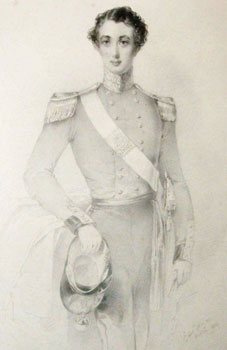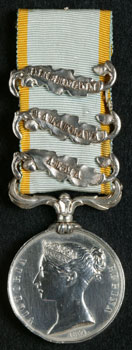Manchester Regiment
Following on from the information about Florence Nightingale’s role in the Crimean War this seemed an ideal opportunity to reflect on the part the local regiment The Manchester Regiment played in this conflict.
The Crimean War was fought between Russia and an alliance made up of Britain, France, the Ottoman Empire and Sardinia between 1853 and 1856. The Ottoman Empire was in decline and Britain and France were concerned with Russia gaining territory and access to the Mediterranean would destabilise the balance of power. Since the defeat of Napoleon in 1815 Britain had become the dominant global power during a period of relative peace and stability. Britain wanted to support the Ottoman Empire to preserve trade routes and serve as a barrier to Russian expansion.
After initial hostilities between Russia and the Ottoman Empire, Britain and France declared war against Russia on 28 March 1854. Russia’s main naval base was located at Sevastopol on the Crimean Peninsula in the Black Sea and ships and troops were sent to the region. Much of the fighting by British troops took place on the peninsula in a long campaign to capture Sevastopol.
The 63rd Regiment of Foot took part in the Crimean Campaign. They were one of two regiments which would later be merged to form the Manchester Regiment. The 63rd fought in the Battle of Alma and the Battle of Inkerman in November 1854. This is often known as ‘the soldier’s battle’ as heavy fog meant they had to fight using their own initiative. The defeat of the Russians lead to the Siege of Sevastopol which would last for 337 days. Both sides were worn down by disease, infection and bad weather as much as the fighting. Peace negotiations in March 1856 restored most territories to their pre-war conditions. The 63rd’s battle honour s won during the Crimean War – Alma, Inkerman and Sevastopol – were preserved as the Manchester Regiment’s honours.
|
Fragment of the colour of the 63rd Regiment This is a fragment of a ‘colour’ or a regimental flag which was carried by the 63rd Regiment during the Crimean War. The embroidered rose and thistle represent England and Scotland and would have been part of a laurel encircling the roman numerals ‘LXIII’. Colours were carried into battle and helped rally the troops amidst the noise and smoke.
|
 Portrait of Ensign James Hulton Clutterbuck James Clutterbuck was a junior officer in the 63rd Regiment who was killed during the Battle of Inkerman while carrying the regimental colour. According to an eye witness he was cheering his men on when he was shot through the neck. His last words were ‘Come on 63rd!’
|
Crimea Medal awarded to James Fitzgerald |
Tameside Museums hold the collections of the Manchester Regiment. For any regimental object enquiries please email portland.basin@tameside.gov.uk The regimental archives are held by Tameside Local Studies and Archives section. See www.tameside.gov.uk/archives for more information.


